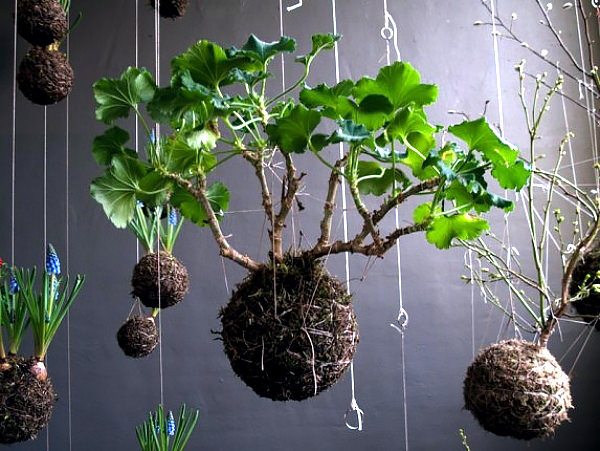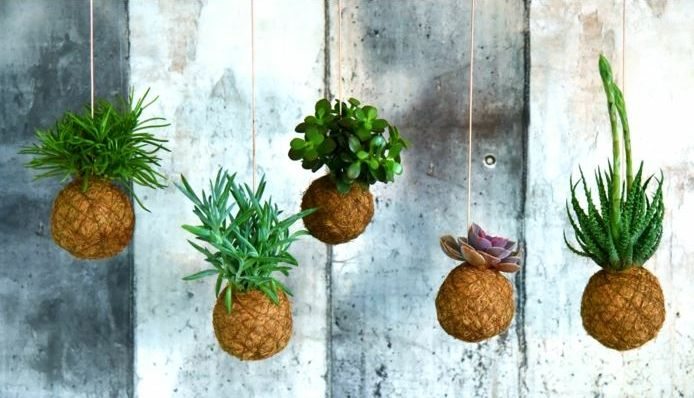Welcome to the world of Kokedama – the Japanese art form that’s taking the indoor gardening scene by storm. Kokedama, which literally translates to “moss ball”, is a style of planting where a plant’s roots are wrapped in moss and bound with string, transforming it into a living sculpture. This ancient art form is not just a botanical trend; it’s a creative way to bring a touch of nature’s serenity into your living space.


Why Kokedama?
For starters, Kokedama adds an element of minimalist beauty to any room. It’s a perfect blend of simplicity and elegance – a single, verdant orb suspended in the air, defying gravity and bringing with it a sense of peace and tranquility. Additionally, in our fast-paced lives where space is a luxury, Kokedama offers a compact green solution that fits even in the smallest apartments.
Getting Started with Kokedama
Creating your own Kokedama is simpler than you might think, and the process is as therapeutic as the result. Here’s a snapshot of what you’ll need:
- A small plant (ferns, ivy, or any shade-loving plant works well)
- Bonsai soil and peat moss
- Sphagnum moss
- Cotton thread or twine
- Water
- Scissors
- Gloves (optional, but recommended)


Step-by-Step Guide
- Begin by removing your chosen plant from its pot, gently shaking off excess soil from the roots.
- Mix your bonsai soil with peat moss. The ideal ratio is 7:3, soil to moss. This mix will be the core for your Kokedama, providing the plant with the nutrients it needs.
- Wet your soil mixture until it’s cohesive enough to form a ball. Then, wrap this around the roots of your plant, shaping it as you go. Think of it as giving your plant a new, earthy home.
- Now, take the sphagnum moss and soak it in water. Once it’s pliable, wrap it around the soil ball you’ve created, covering it completely. This layer acts as the skin, holding everything together.
- Finally, take your string and start wrapping it around the moss ball. The string isn’t just functional; it’s a part of the aesthetic. Wrap it tightly enough to secure the moss, but allow some natural shape and texture to come through.
- Once you’re satisfied with the look, tie off the string and leave a loop for hanging if desired.
Care for Your Kokedama
Your Kokedama will thrive with some basic care:


- Watering: Submerge the moss ball in water every few days, or when the ball feels light and dry.
- Light: Place your Kokedama in a spot with indirect sunlight.
- Pruning: Trim your plant periodically to maintain its shape and health.
Incorporating Kokedama into Your Decor
Kokedama can be displayed in various ways:
- Suspended in mid-air from the ceiling, creating a floating garden effect.
- Placed on a decorative dish or a piece of driftwood, for a more grounded appearance.
- Arranged in groups at different heights to create a living art installation.
The Takeaway
In essence, Kokedama is more than just a gardening technique; it’s a form of living art that brings beauty, calm, and a connection to nature into our urban lifestyles. It’s a conversation starter, a meditative practice, and a unique way to express creativity through greenery.
By embracing the simplicity and elegance of Kokedama, you infuse your home with a piece of nature’s soul – and isn’t that something we all seek in our concrete jungles?
So, roll up your sleeves, invite the calm of the Japanese gardens into your living room, and transform your space with the enchanting simplicity of Kokedama.
check it out too
- Year-Round Fresh Produce with Home Vertical Aeroponic Garden
- Indoor Beekeeping: A Beginner’s Guide to Apiculture at Home
- Maximizing Your Balcony: a Micro Herb Garden in Urban Areas





